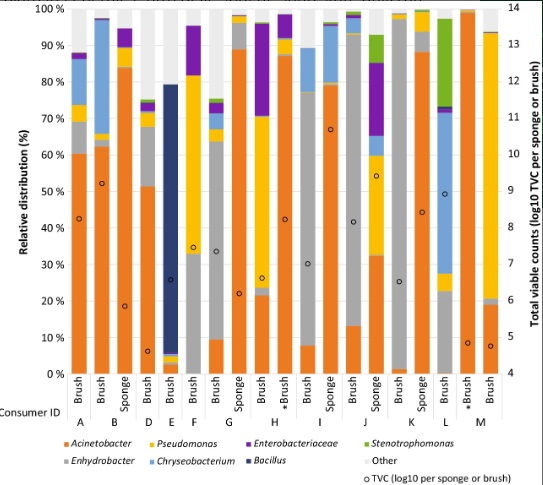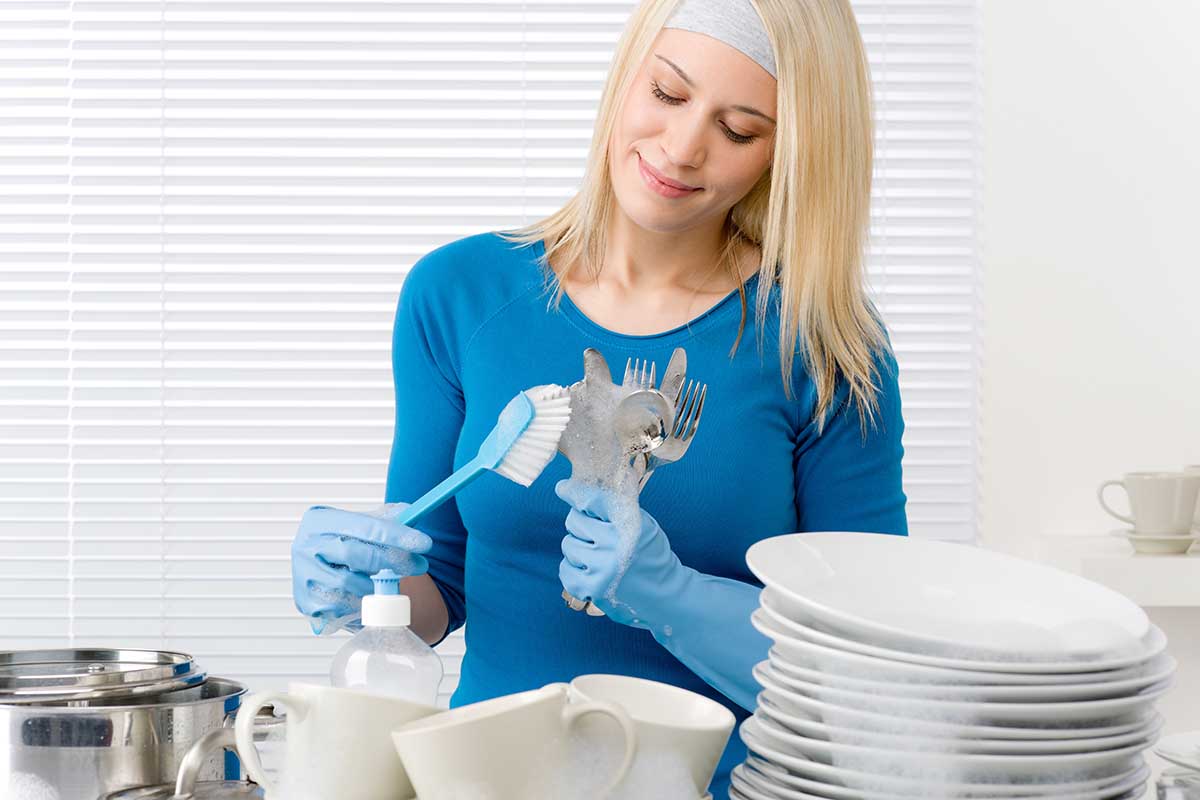The sponges that we all use to wash dishes quickly turn into a real receptacle for bacteria. This is confirmed by a new study conducted by a Norwegian research team and recently published in the Journal of Applied Microbiology
@limonzest/123rf
We specify immediately that many of the bacteria found on sponges are not harmful but those that are, such as salmonella, if they end up there, can easily spread from sponges to hands, kitchen surfaces and equipment, ending up in food, with the risk therefore to make people sick.
To say it is a new study that examined kitchen sponges of 20 people living in Portugal and 35 brushes and 14 sponges of people living in Norway.
A previous survey, conducted by the same research team of 9,966 people, found that sponges are the most commonly used item for cleaning kitchens and washing dishes in most of the 10 European countries sampled, while brushes are l most used tool in only two countries: Norway and Denmark.
The sponges were all used for washing dishes, pots and pans, and 19 of the 20 Portuguese sponges were used five to six times a week or more often. Of the brushes collected in Norway, 32 out of 35 were used five to six times a week or more.
No pathogenic (i.e. disease causing) bacteria have been found in the brushes or sponges. However, overall levels of bacteria were lower in brushes than in sponges and when the researchers added salmonella bacteria to both objects, they found a significant reduction in the number of salmonellae in brushes left to dry overnight, while this was not the case. for sponges, regardless of storage conditions.

@Journal of Applied Microbiology.
Ma why are sponges so contaminated with bacteria? This was explained by Trond Møretrø, a researcher at Nofima, a Norwegian food research institute, and lead author of the study:
The sponge is moist and accumulates food residues which are also food for the bacteria, leading to a rapid growth of the bacteria.
What surprised the researchers most was the fact that it didn’t matter how people cleaned the sponge or how often. The bacteria still grew and it is very difficult for consumers to stop this growth unless the sponges are replaced daily.
The researchers, in fact, had already experienced similar results, in fact the new research is based on a laboratory study published last year by the same team that had discovered just how bacteria multiply more easily on sponges rather than on brushes for washing. dishes. Read also: To wash the dishes it is better to use a brush (and not a sponge). I study
And here we come to the alternative that scientists consider to be more hygienic.
The alternative to the sponge for washing dishes
The Norwegian researchers point out that the most valid alternative is to use kitchen brushes, in fact this would be the most hygienic way to wash dishes. As Professor Møretrø said:
Salmonella and other bacteria grow and survive better in sponges than in brushes, the reason being that sponges in daily use never dry out. A single sponge can harbor more bacteria than people on Earth.
Unlike sponges, brushes dry between uses and it is this characteristic that makes them less dangerous for bacterial growth:
Since the brush dries very quickly, harmful bacteria will die. Additionally, most brushes have a handle that prevents direct hand contact with potential harmful bacteria, unlike sponges. I recommend that consumers try a brush next time they need to replace the sponge.
Regarding salmonella, the study’s conclusions read:
To prevent health risks in case of contamination by Salmonella on the tool, consumers should be advised to use brushes. Further research is recommended to investigate the role of consumer practices and, in particular, the role of brush cleaning routines and brush life from a hygienic point of view. Additionally, studies can be expanded with pathogens other than Salmonella.
But there is an underlying problem: consumers love to use sponges more and it will be difficult to change habits. Markus Ergert, a microbiologist at the University of Furtwangen in Germany who conducted similar research, advises those who just don’t want to give up using the sponge to use a new one often, changing it at least every two or three weeks.
Follow us on Telegram | Instagram | Facebook | TikTok | Youtube
Fonte: Journal of Applied Microbiology
Read also:
